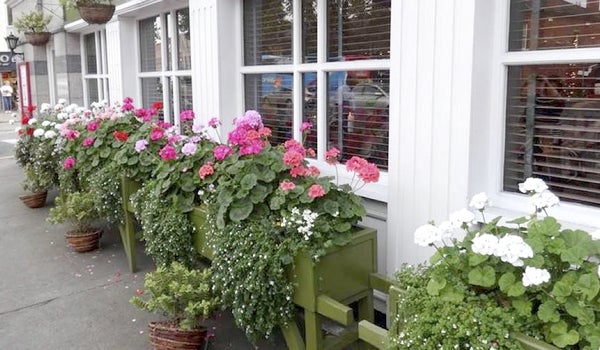Darrell Blackwelder: How well do you know your geraniums?
Published 12:00 am Friday, May 22, 2015

- the native Carolina geranium (Geranium carolinianum L.)
Garden centers and retail outlets are gearing up full speed for the summer season with a virtual sea of vivid colors and textures of bedding plants that will enhance their landscapes.
One of the most staple of all bedding plants is geraniums. The plant is considered a staple in spring plantings, used as regal accent plants or mass plantings in many landscapes and containers. But will the real geranium please stand up?
Many gardeners fail to realize that the plant home gardeners have grown to know as a common geranium is really not a true geranium; it’s actually a member of the genus Pelargonium sp. The true geranium Geranium sanguineum, also known as cranesbill, https://plants.ces.ncsu.edu/plants/all/geranium-sanguineum/ is actually a perennial accent plant often strategically placed in many perennial gardens.
Admittedly, the less common cranesbill is not as popular as our common bedding plant geranium, but it’s becoming more popular as many home gardeners are integrating herbaceous perennials in their landscapes.
Cranesbill geraniums are staples in English and other European gardens. A good example of perennial geranium (cranesbill) utilization is featured at the Agriculture Center Extension Master Gardener Sensory Garden on Old Concord Road in Salisbury. The wayward plant seems to have adapted well to our fickle climate.
Because cranesbills are an herbaceous perennial, it becomes deciduous in the fall at first frost. The plant appears as a mounding plant blooming in late spring and summer. Its colors often vary from a light purple to pink depending on the cultivar. Fortunately, the perennial can tolerate dry soils, but the plant seems to be happiest in improved, moist soils.
Pelargonium sp. geraniums or common geranium, associated mostly as bedding plants, are available in a variety of types and colors from the regal reds used in formal mass plantings to ivy leaved vine-like plants popular as hanging baskets. There’s also scented leaf geranium cultivars used for making potpourris as well as a geranium cultivar which produces citronella oils claiming to be a natural repellent for mosquitoes.
As with cranesbills, bedding plant geraniums respond to enriched soils and occasional fertilization. Be sure to keep geraniums evenly moist during the growing season. Go the website http://content.ces.ncsu.edu/geranium-culture-for-home-gardeners.pdf for more detailed information on geraniums in the landscape.
Adding another caveat to this mystery and confusion about geraniums is the native Carolina geranium (Geranium carolinianum L.) http://www.turffiles.ncsu.edu/weeds/Geranium_Carolina.aspx . This plant is actually considered by many as a weed, (sorry, Clyde) and is easily located in pastures, edges of fields and most landscapes. It’s normally not a problem but can be easily controlled with herbicides.
Darrell Blackwelder is the County Extension Director in Rowan County with horticulture responsibilities with the North Carolina Cooperative Extension Service in Rowan County. Learn more about Cooperative Extension events and activities by calling 704-216-8970 Facebook or online atwww.rowanextension.com




